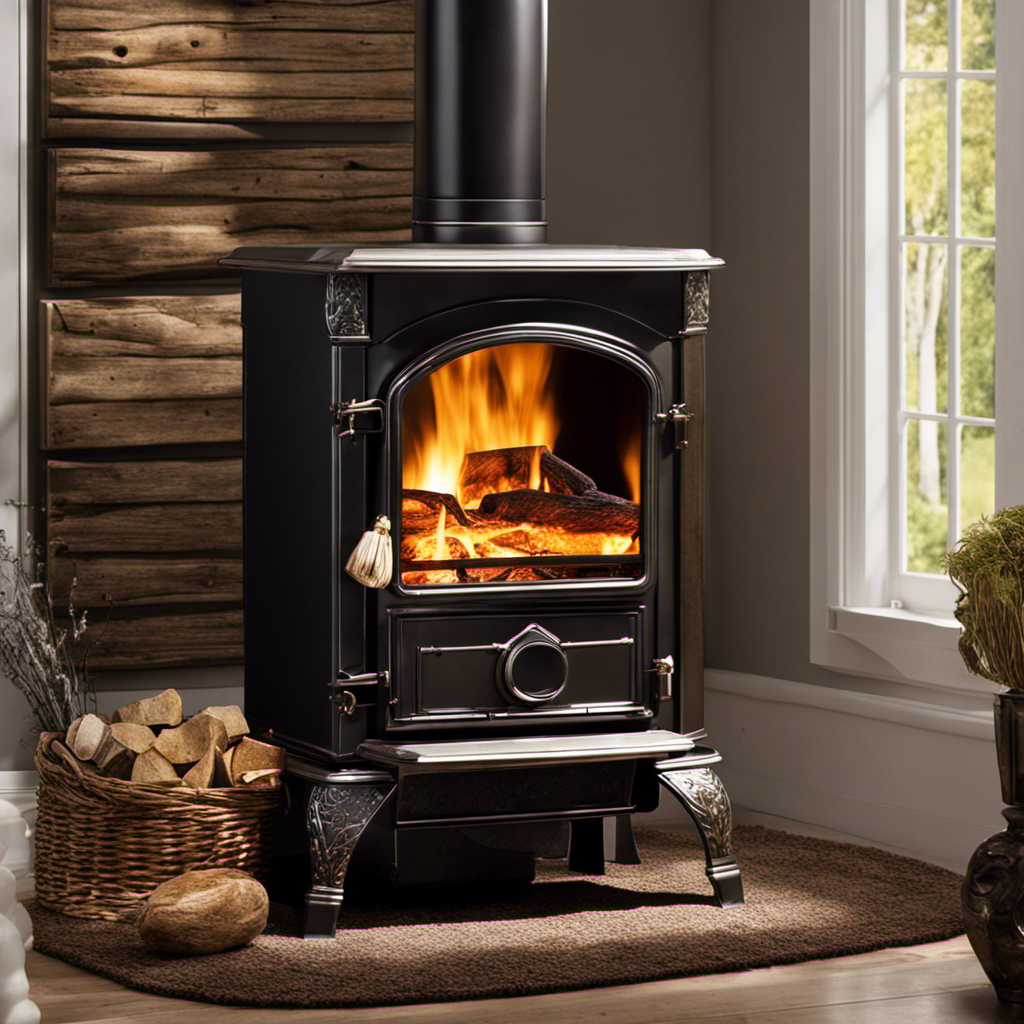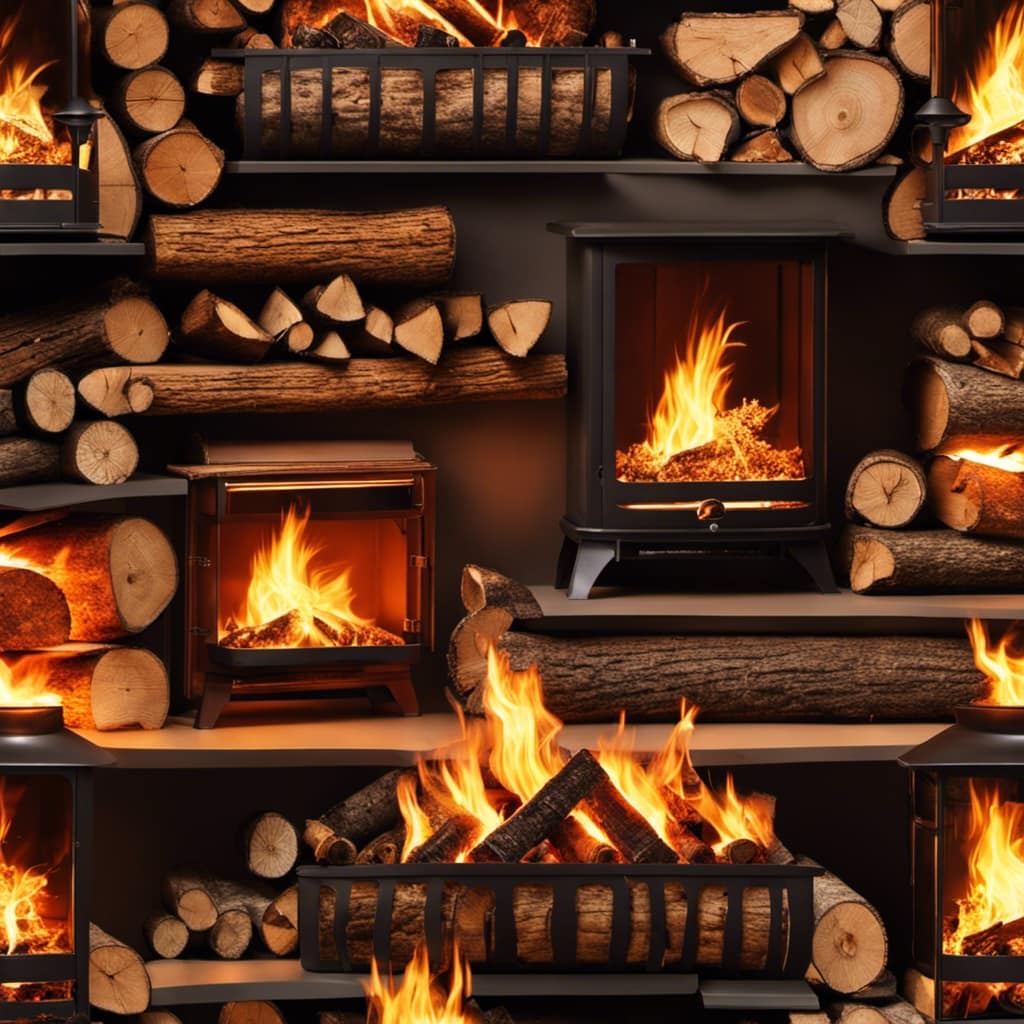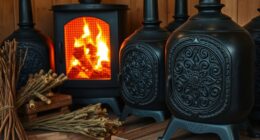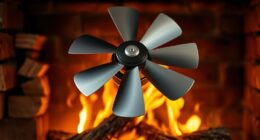I’m here to share with you the types of wood ideal for use in a wood-burning stove. Choosing the right type is crucial for optimal heat generation and maintaining safety. Allow me to guide you through the specifics of opting for hardwoods for burning purposes and avoiding softwoods.
Plus, we’ll delve into the difference between seasoned and green wood. Join me as we explore the best wood options that provide long-lasting warmth. And if you have specific needs, I’ll even share alternative wood choices.
Let’s get started!
Key Takeaways
- Oak, maple, and birch are high-density hardwoods ideal for wood stoves.
- Pine and fir should be avoided as they produce excessive creosote and pose a fire hazard.
- Seasoned wood burns more efficiently, producing more heat and less smoke.
- Oak and hickory are recommended for their slow-burning properties and consistent warmth.
Hardwoods for Efficient Burning
I usually burn hardwoods in my wood stove for more efficient heating. Hardwoods such as oak, maple, and birch are known for their high density and slow-burning properties, making them ideal choices for a wood stove. These efficient hardwoods provide a longer-lasting fire, producing more heat with less wood.
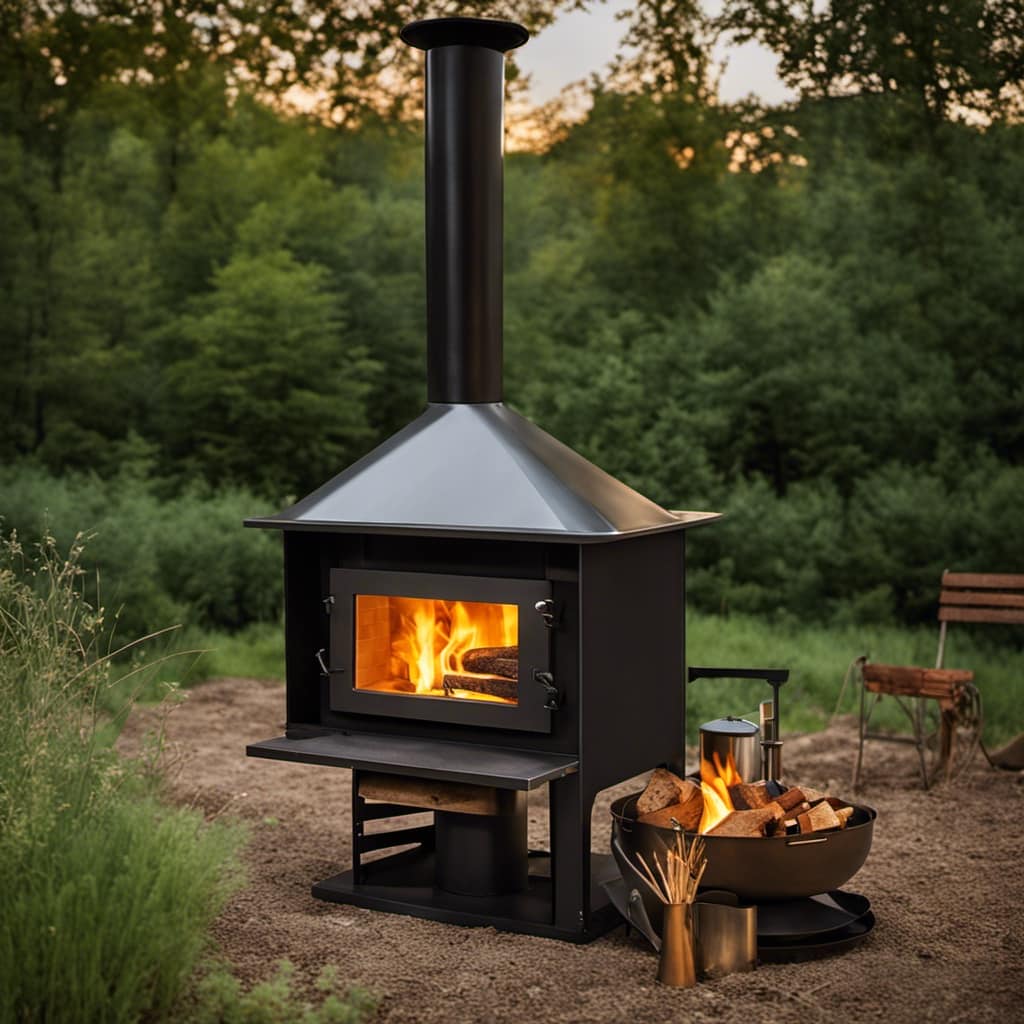
Not only do they provide a cozy and warm atmosphere, but they also help save on firewood costs and reduce the number of times you need to refuel your stove. In addition to being efficient, it’s important to consider sustainable firewood options.
Look for hardwoods that are locally sourced and harvested from well-managed forests to ensure the long-term availability of these resources. By choosing efficient and sustainable hardwoods, you can enjoy a warm and comforting fire while minimizing your impact on the environment.
Softwoods to Avoid in a Wood Stove
The softwoods to avoid in a wood stove are those that produce excessive amounts of creosote, such as pine and fir. Burning softwoods like these can lead to a buildup of creosote in the chimney, which poses a fire hazard.
Additionally, softwoods have a higher moisture content compared to hardwoods, which can impact wood burning efficiency. When wood has a high moisture content, energy is wasted on evaporating the water instead of producing heat. This means that softwoods may not burn as efficiently as hardwoods, leading to less heat output and more smoke.

Furthermore, burning softwoods in a wood stove can have environmental impacts. Softwoods tend to release more pollutants when burned, contributing to air pollution and potentially harming air quality.
Therefore, it’s advisable to avoid burning softwoods like pine and fir in a wood stove for both safety and environmental reasons.
Seasoned Vs. Green Wood: What’s the Difference
Although seasoned wood is preferred for burning in a wood stove, green wood can still be used with proper precautions.
Seasoned wood has several benefits for improved stove performance. It burns more efficiently, producing more heat and less smoke. The moisture content in green wood is high, causing it to burn at a lower temperature and produce more smoke.

To properly season green wood, it needs to be split into smaller pieces and stored in a dry, well-ventilated area for at least six months. This allows the wood to dry out and reach a moisture content of around 20%.
Properly seasoned wood will have a darker color, cracks on the ends, and a hollow sound when tapped together.
Best Wood Types for Long-Lasting Heat
My favorite wood types for long-lasting heat are oak and hickory, as they burn slowly and produce a consistent warmth. However, there are other wood options that can also provide efficient heat for your wood stove. One such option is firewood pellets. These small, compressed wood pellets have gained popularity in recent years due to their convenience and efficiency. They are easy to store, produce minimal ash, and have a high heat output. However, some drawbacks include the need for a pellet stove, which can be expensive, and the dependency on a constant supply of pellets. Another option worth exploring is fruitwood, such as apple or cherry. Fruitwood burns hot and clean, producing a pleasant aroma. It is a popular choice for those who enjoy the added fragrance and aesthetic appeal. Overall, choosing the right wood type for your wood stove depends on your specific needs and preferences.
| Pros of Firewood Pellets | Cons of Firewood Pellets |
|---|---|
| Convenient to store | Requires a pellet stove |
| Minimal ash production | Dependency on pellet supply |
| High heat output | Expensive upfront cost |
| Limited availability |
What Types of Wood Are Best for Different Sizes of Wood Stoves?
When selecting the right size of firewood for wood stove, consider the stove’s size. For smaller stoves, opt for smaller pieces of wood, around 4-6 inches in diameter. Larger stoves can accommodate larger pieces, up to 6-8 inches in diameter. Hardwoods like oak and maple burn longer and produce more heat.
Alternative Wood Options for Specific Needs
I’ve found that using a combination of birch and pine wood has been a great alternative for my specific needs.
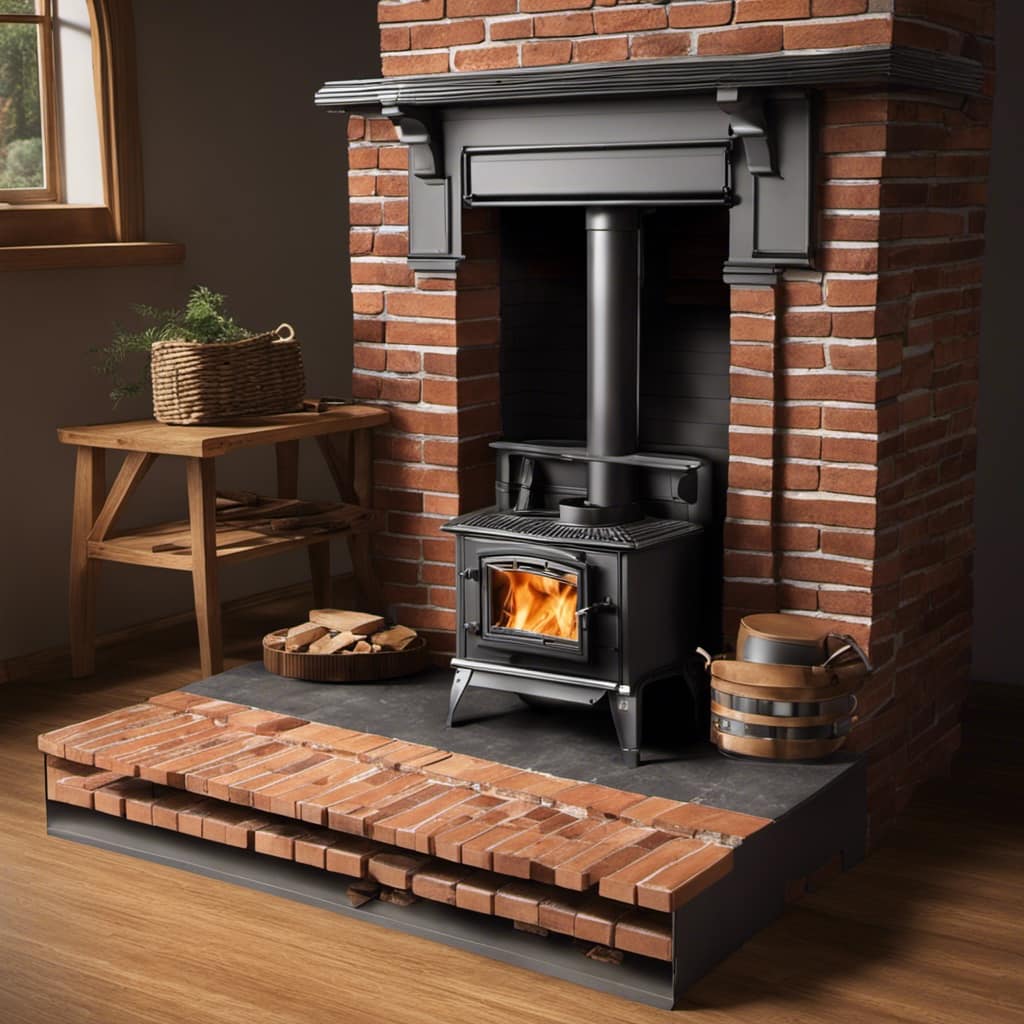
While compressed logs are often considered an eco-friendly option, I prefer the traditional approach of using natural wood in my wood stove.
Birch wood burns hot and produces a steady, long-lasting heat, making it perfect for heating my home during the cold winter months.
Pine wood, on the other hand, ignites quickly and creates a beautiful flame that adds warmth and ambiance to my living space.
Additionally, I’ve discovered that fruitwoods, such as apple or cherry, can enhance the flavor of food when used for cooking in a wood-fired oven or grill.
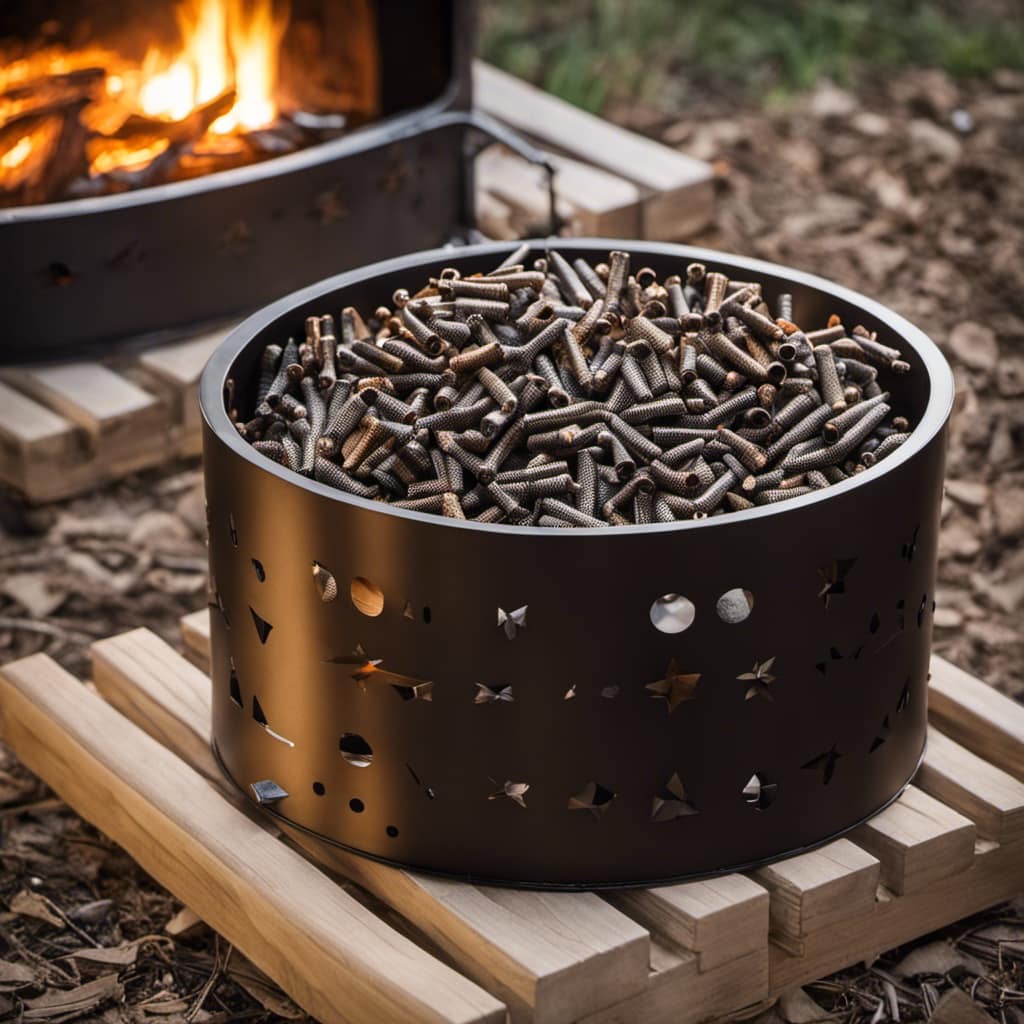
Frequently Asked Questions
Can You Burn Treated or Painted Wood in a Wood Stove?
I wouldn’t recommend burning treated or painted wood in a wood stove. The chemicals used in the treatment or paint can release toxic fumes when burned, which can be harmful to your health and the environment.
Is It Safe to Burn Wood That Has Been Infested With Insects or Has Mold?
Burning infested wood or moldy wood in a wood stove is not safe. It can release harmful substances into the air and pose health risks. Stick to dry, seasoned wood for optimal safety and efficiency.
Are There Any Types of Wood That Produce Less Smoke and Creosote Buildup in a Wood Stove?
When it comes to wood stove efficiency and minimizing smoke and creosote buildup, some types of wood are better than others. The best types of wood for wood stoves are those that burn hot and produce less smoke.
Can You Burn Wood Pellets or Briquettes in a Traditional Wood Stove?
Yes, you can burn wood pellets or briquettes in a traditional wood stove. They are alternative fuel sources that can provide efficient heat and reduce the amount of smoke and creosote buildup.
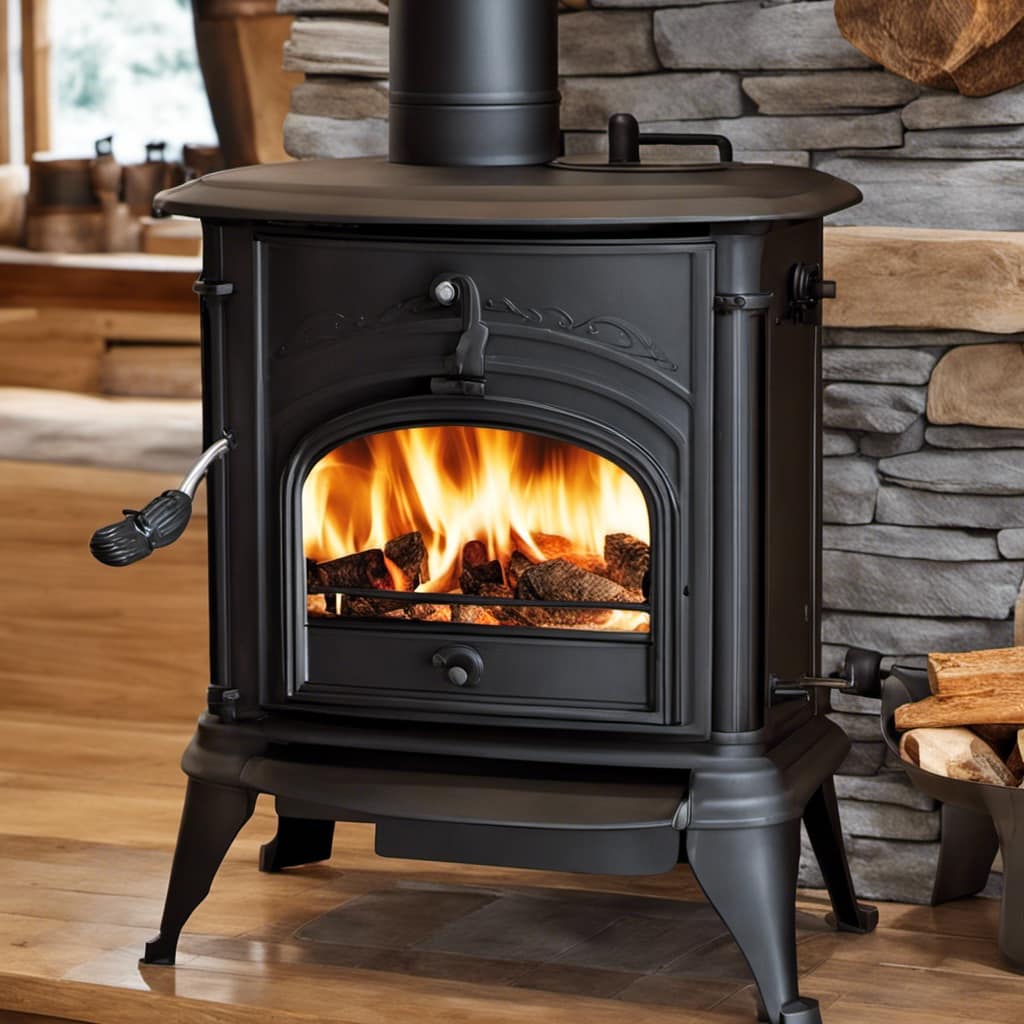
What Are the Potential Dangers or Risks of Burning Improper Wood Types in a Wood Stove?
Burning improper wood types in a wood stove can pose potential dangers. Wet wood, for example, can lead to excessive creosote buildup in the chimney, increasing the risk of chimney fires. Regular chimney cleaning is crucial for safety.
Conclusion
In conclusion, when it comes to burning wood in a wood stove, it’s important to use hardwoods for efficient burning and avoid softwoods.
Seasoned wood is preferable to green wood, as it burns cleaner and produces more heat.
One interesting statistic to note is that oak, a common hardwood, can produce up to 32.6 million BTUs per cord, making it an excellent choice for long-lasting heat.
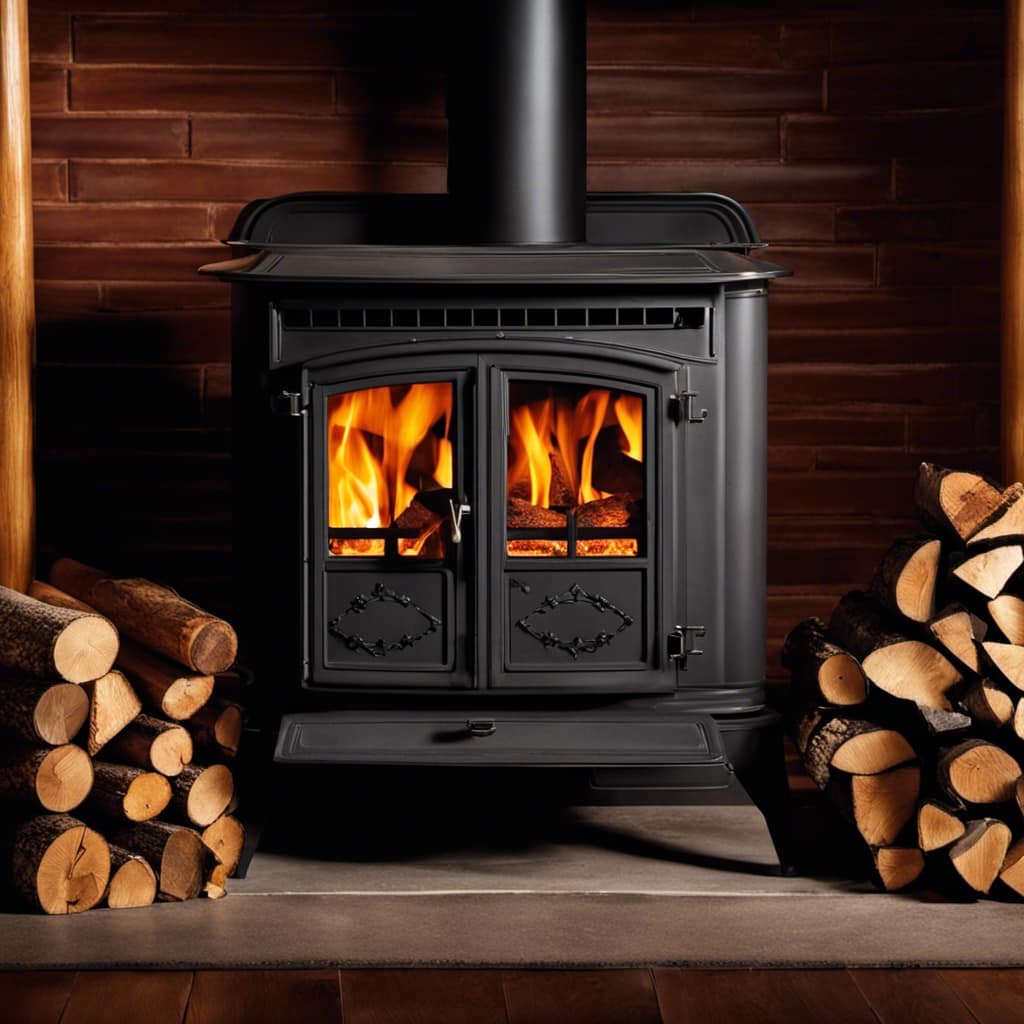
Remember, choosing the right wood is essential for a warm and efficient wood stove experience.
Growing up surrounded by the vast beauty of nature, Sierra was always drawn to the call of the wild. While others sought the comfort of the familiar, she ventured out, embracing the unpredictable and finding stories in the heartbeat of nature.
At the epicenter of every remarkable venture lies a dynamic team—a fusion of diverse talents, visions, and passions. The essence of Best Small Wood Stoves is crafted and refined by such a trio: Sierra, Logan, and Terra. Their collective expertise has transformed the platform into a leading authority on small wood stoves, radiating warmth and knowledge in equal measure.




